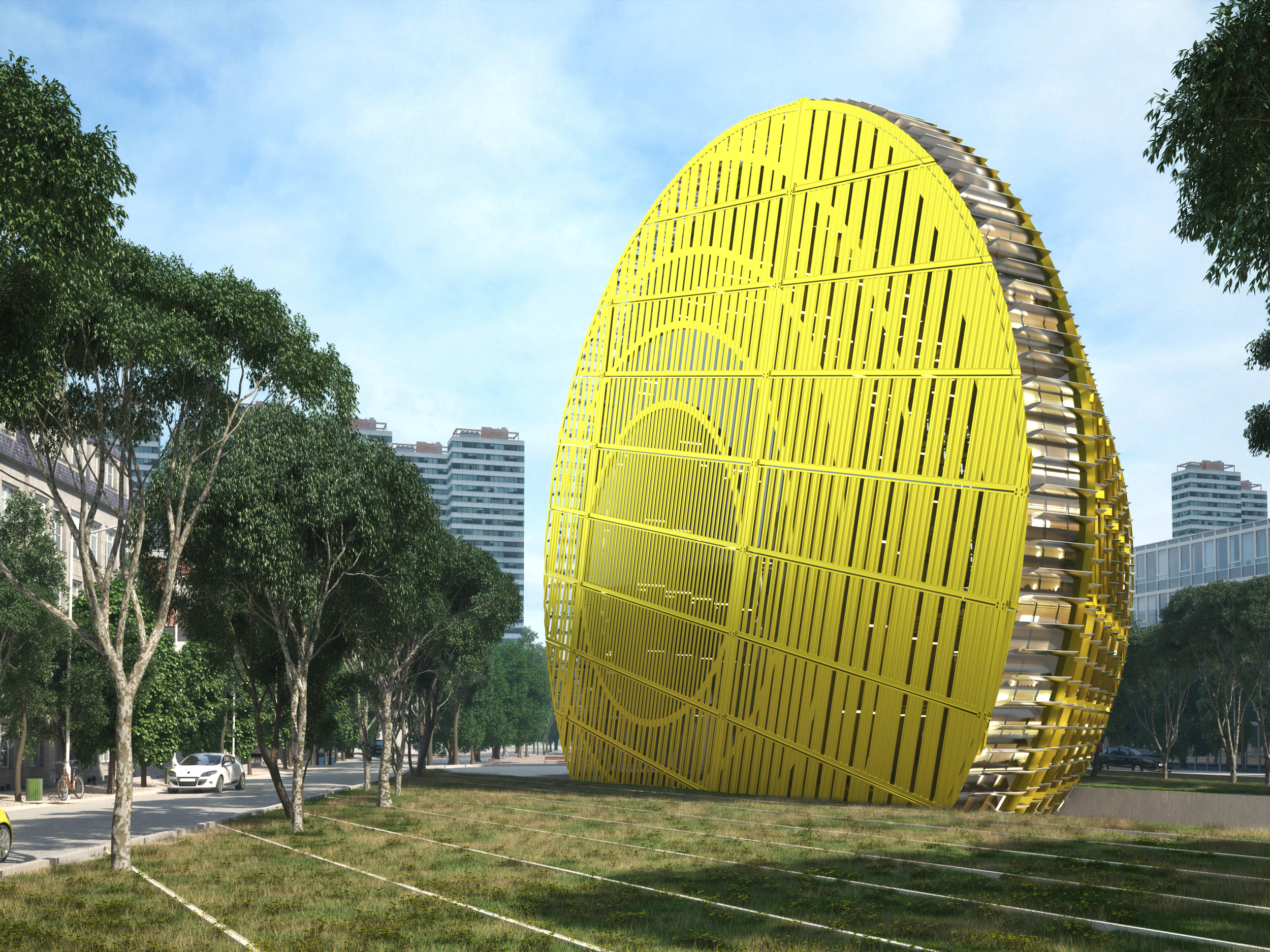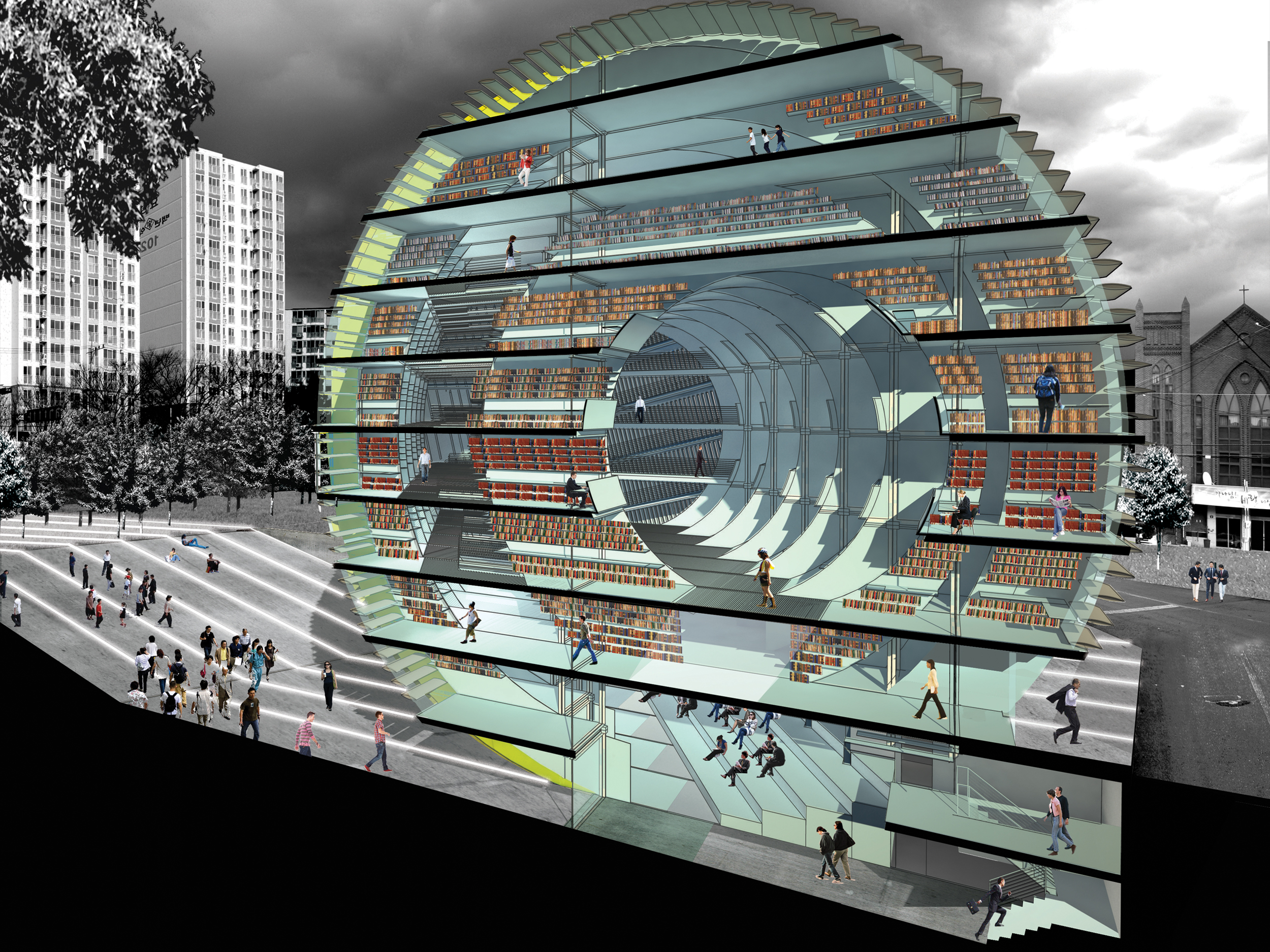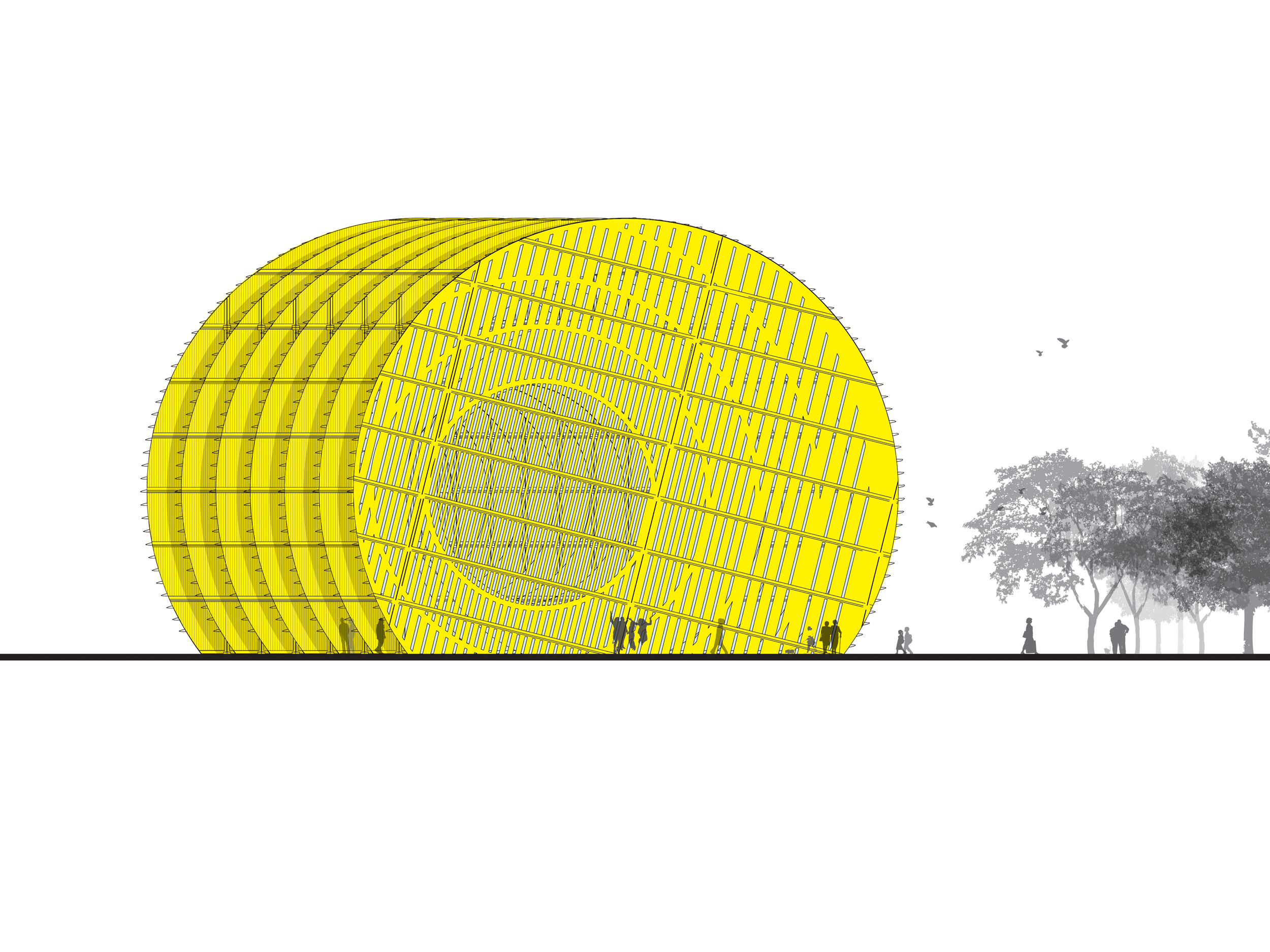










DAEGU PUBLIC LIBRARY
Our vision for the Daegu Gosan Public Library is for a building with a strong character: for a very strong and very special landmark on the local skyline that inspires a feeling of identification and investment in the community it serves. Within the building, our vision is for a dynamic relationship between diverse spaces that enables lively exchanges between visitors, but also provides the acoustic protection and functional organization that enable the library to function with efficiency and serenity. The building has, externally, a powerful sculptural presence that anchors a complex and varied urban site, and has, internally, a subtle variety of big and small spaces, and a careful curatorship of daylight and views, that ensures a lively yet scholarly atmosphere. The scale of the structure mediates between the adjacent low-rise residences and the high-rise towers to the North of the road. The round form of the structure makes it stand out as a clear icon of public life, and distinguishes it from the sometimes repetitive rectangular geometries of the nearby residential towers.
The Architectural Idea
The plaza leads down to an independent entrance for the assembly room/auditorium at the lowest level, and to exhibition spaces on an adjacent mezzanine. On the South side of the building, a street-level entrance leads visitors to the lobby/information area of the library. In the lobby; a translucent ceiling filters in daylight from an atrium above, while filtering out sound from the entry area. The floor of that atrium is the second level above ground, and serves as the main library level, which is overlooked by four terraced reading areas, each on their own mezzanine, and by book stacks and shelves.
The terraced layout encircling the atrium allows for functional efficiency, but also for great visual connections and meaningful understandings between different areas and activities. A variety of public and semi-private areas for browsing, consulting, readying, studying, lounging, and more, is generated by the juxtaposition of large open spaces and intimate alcove-like areas. This variety of spatial experiences supports the harmonious balance between active and restful, focused and reflective, representing a library at its best.
Above this main area, is an acoustically-protected children’s activity area, with a double-height area occupied by a stepped amphitheater dedicated to playful learning activities. Above that, with commanding views both inside and outside, are administrative offices. A roof garden and observatory crowns the structure, which creates another spectacular connection between library and park, neighborhood and city and allows for more leisure activities and social interaction.
The Structural and Technological Systems
The structure has been designed with careful attention to sustainable building systems and contemporary technology. It is composed of some 170 standard ISO shipping containers, which have been stacked cut on the outside and carved on the inside to create flowing interior spaces and sculptural curves. This approach offers substantial advantages in both economy and environmental sustainability. A complex and expressive form can be generated with an unusually efficient structural system. This creative “upcycling” of prefabricated components has an even more positive environmental impact than the standard recycling of building materials. By mobilizing prefabrication strategies, site work and building fabrication can happen simultaneously, and construction is substantially less disruptive to the ongoing life of the neighborhood and the community: it’s a model of simpler and cleaner construction that sets a tone of proficiency and serenity: a tone and feeling that carries over into the entire life of the building.
This proposal, while innovative, applies twenty years of research and real-world applications in architecture of this kind of building system. In this design, we take advantage of the structural and material economy of the shipping container component, and its ability to be efficiently insulated and integrated with other building systems. We celebrate the contrast between the colorful and tough exterior, and the refined interior with finishes and furnishings appropriate to a modern library environment. We also celebrate the structure's unusual technological beauty, for example, by creating a dynamic pattern of narrow windows that rhymes with the corrugations of the steel surface, letting more light into the atrium areas, and protecting stacks and shelves. This pattern on the building’s East and West walls is complemented by a system of horizontal fins along the edge of the “wheel”; these fins filter views, providing privacy and translucency, as well as solar shading (and sheltering the roof garden/observatory). The fins also incorporate photovoltaic arrays that help power the building. The geometry and north-south orientation of the structure is perfectly optimized for this sustainable gesture.
Credits
Type: Public Library Location: Daegu, Korea
Size: 33,000 SF
Design: 2012
Structure: Silman
Competition
